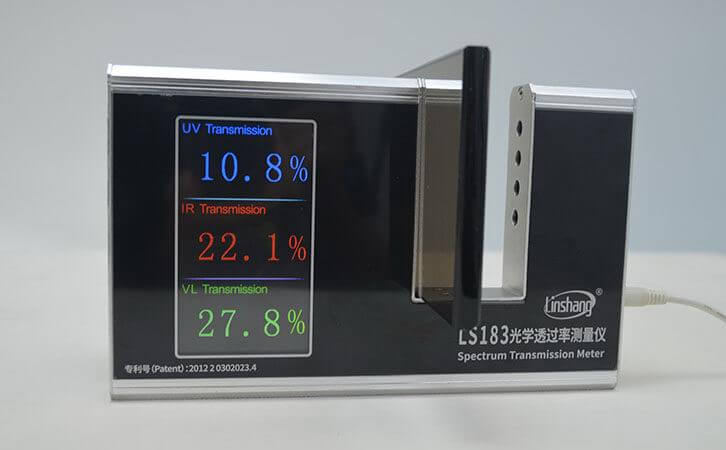Choose a Safe Glass Film with Light Transmittance Meter
The high-quality architectural glass film can effectively block solar radiation from entering the room through the glass, thereby reducing the indoor heating of the building. Therefore, in summer, it can not only maintain the indoor temperature, improve environmental quality and increase comfort; it can also effectively reduce the temperature and control costs. However, glass film generally affects the transmittance of glass, so it is necessary to measure the transmittance of glass with a professional light transmittance meter. However, at the same time, it also brings a problem, that is, in the winter, the architectural glass film reduces the indoor heating of the building. Wouldn't it reduce the indoor temperature and increase the energy consumption! This seems very logical, so many people have come to the conclusion that in cold regions, the installation of architectural glass film is beneficial in summer and disadvantageous in winter. Actually, it is not.
First of all, in winter, the temperature of indoor heating is limited by sunlight.
1. The sun is shining.
2. The time period when the solar radiant heat is sufficient to heat the room is between 10-16 points.
3. The sunny side of the building to which the sun can shine. Without these three conditions, buildings cannot be heated by solar radiation.
Therefore, after the installation of architectural glass film, the reduction of the indoor heating in this part is very limited.
Secondly, even in winter, when the solar radiation warms the room through the glass, it often exceeds the comfortable temperature. The glass film can reduce the loss of indoor temperature while blocking excessive solar radiation heat from entering the room. It can maintain a relatively constant temperature in the room. Its thermal insulation effect is far greater than that of limited solar radiation.
Architectural glass film, in addition to its thermal insulation effect, also has the function of blocking ultraviolet rays.
Similarly, these parameters can also be tested with a solar film tester. We can also use a light transmittance meter to choose a comfortable and safe architectural glass film. Light transmittance is an important technical indicator of many optical products, such as glass, solar film, and laminated glass. The test principle of the light transmittance meter is to use a visible light source to illuminate the measured substance. The sensor detects the incident light intensity of the light source and the light intensity after passing through the measured substance, expressed as a percentage.
The LS183 light transmittance meteruses a parallel light path design, which is suitable for detecting large thickness materials with an accuracy of within ± 2%; the light source conforms to the CIE photopic luminosity function to ensure that it passes the measurement institute's inspection. It is foreseeable that in the near future, architectural glass films will be universally accepted and recognized like automobile films and will become a fashion.
- Linshang Insulated Glass Unit Measuring Tools
- Spectacle lens anti-blue light detection---blue-violet light transmittance meter
- Measurement of Optical Density
- Difference of LS116 Transmission & LS117 OD Meter
- Difference between LS116 and LS117 Light Transmittance Meter
- What’s the Difference Between Point Light and Parallel Light Transmittance Meter
